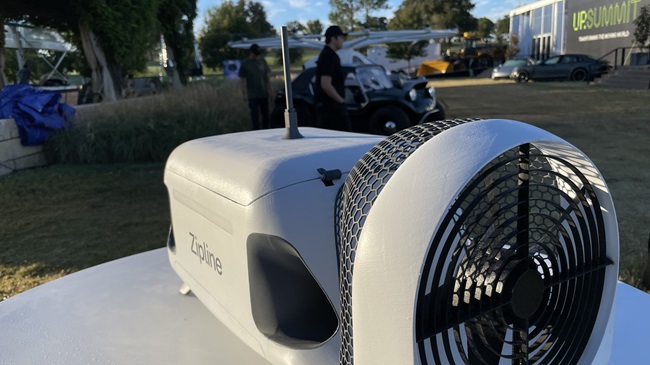HAI wants UAS integration done right
As far as the Helicopter Association International is concerned, when it comes to the integration of unmanned aerial systems into the National Airspace System, safety is the objective, HAI President Matt Zuccaro said as he kicked off an HAI safety symposium on integration of UAS into the NAS. The presentation opened the first day of the 2017 HAI Heli-Expo, which was held March 6 through 9 in Dallas.
HAI strongly supports the technology, which also presents a business opportunity to helicopter operators, Zuccaro said. “This is the most exciting technology to come down the road in aviation in decades.” He noted that most drones will continue to be limited to low altitudes.
“The jobs and the work they’re going to do are what’s currently done by helicopters,” Zuccaro said. Helicopter operators are the experts and should consider offering UAS services. “You want to develop the capability to be that one-stop shop. Don’t lose your customer.”
Some in the UAS community have suggested designating airspace 500 feet and below for UAS only—segregating the remotely piloted aircraft rather than integrating them into the NAS. “I’ll be honest, I’ll die first before I give my approval to that,” Zuccaro said.
Zucarro said he isn’t concerned about the Amazons and the Googles. They’re professionals who recognize they have liability—and the smallest percentage of operators. Personal and recreational users conduct the majority of UAS flights. “There’s no oversight for those individuals. There’s no training for those individuals.” Oversight is needed to prevent a midair in the low-altitude spectrum, he added, noting that HAI is working with other organizations on drone education programs. “We want these individuals under the tent with us.”
The FAA is definitely keeping an eye on efforts at local airspace control, said Jim Viola, manager of FAA Flight Standards’ General Aviation and Commercial Division.
Viola noted the number of provisions that cam be waived under Part 107, and mentioned Pathfinder programs working to explore other aspects of UAS operations. “We want to allow the technology to continue to grow,” he said.
“There’s a vast amount of information out there,” said Dr. Scott Burgess, an associate professor at Embry-Riddle Aeronautical University. From private companies through graduate degree programs, instruction is available on operations as well as systems, applications, and engineering, he said. “It’s really only going to get better on the academic side.”
The ideal UAS pilot also does planning, maintenance, and safety functions, Burgess noted. “That’s a benefit to you—you don’t have to source as much.”
Bryan Archer is founder of Galaxy Aviation, a Part 145 repair station—but even before that, he flew model aircraft. He began flying UAS when the Section 333 exemption process was initiated. “As you know, in Part 107 and Section 333, there are no airworthiness standards,” he said. “The pilot must assure the aircraft is in a safe condition for flight.”
An important part of maintenance is ensuring that all software updates are implemented, Archer said. “The most common failure that I have seen in the field so far is the electronic speed controller.” Its failure results in a motor’s failing, he continued; an octocopter may still be able to fly, but a quadcopter will come down.
From a public safety mission perspective, sUAS can perform about one-third of the missions traditionally accomplished by manned aircraft, explained Alan Frazier, an associate professor at the University of North Dakota. With an operating cost of maybe $20 per hour—compared to an average of $575 per hour, plus crew, for a helicopter—there’s lots of interest.
“It’s hard to say how many law enforcement agencies currently operate small UAS,” Frazier said. “I’ve heard people opine that these are going to be in the back of every patrol car. I don’t think that’s going to happen.” Instead, he expects certain officers to be cross-trained and equipped, using the capabilities when required—much as canine officers work today.
“Part 107 is not working for public safety. We hoped it would,” he said. Waivers take too long to obtain to be helpful. Frazier noted a recent, high-profile waiver request in Houston that took six weeks for approval; it allowed one pilot to operate 300 drones, at night, in Class B airspace. He does some law enforcement work and has been waiting six months for a waiver for Class D airspace in North Dakota. “And we’re not a lone case,” he said. “Saving lives is more important than Super Bowl halftime entertainment.”




